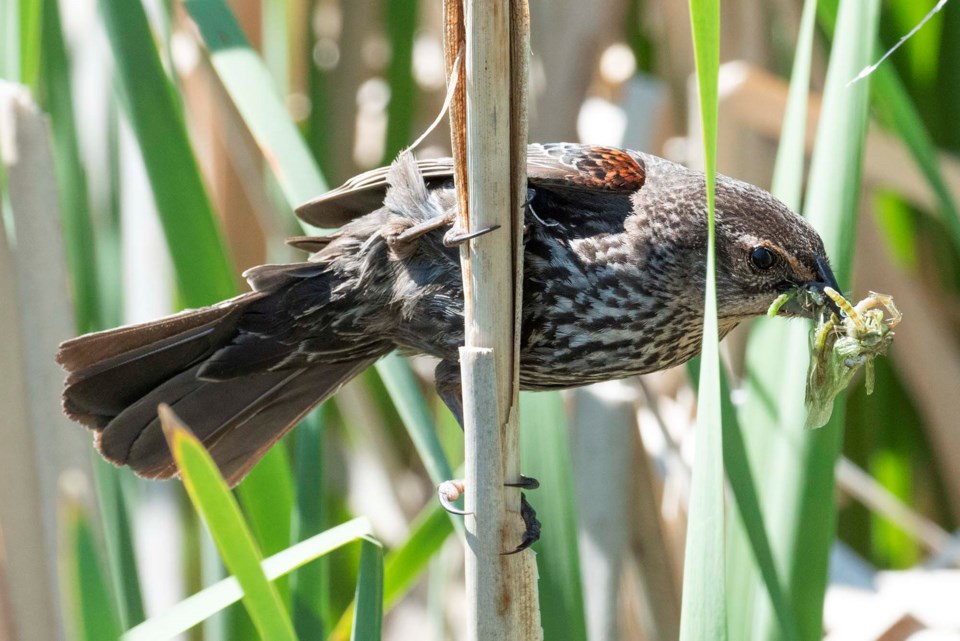Nature lovers will flock to Big Lake this Mother's Day weekend for an extra-big celebration of migratory birds and bugs.
Hundreds of nature enthusiasts will be at the Lois Hole Centennial Provincial Park shelter and the John E. Poole Wetland boardwalk this May 11 to mark World Migratory Bird Day. Organized locally by the Big Lake Environment Support Society (BLESS) and Nature Alberta, this free annual event celebrates the return of migratory birds to St .Albert and teaches residents about the importance of wildlife.
This year’s event features twice as many activities as last year’s due to a partnership with Nature Alberta, which this year decided to team up with BLESS instead of holding its own migratory bird day event, said BLESS members Tony and Lyn Druett. Tony said he hopes about 300 people will come to this year’s celebration as a result, or about twice last year’s turnout.
“We could get a really large number of people,” Lyn said.
Birds and bugs
World Migratory Bird Day is organized globally by the group Environment for the Americas and is celebrated on the second Saturday of May in North America, Lyn said. (Nations south of the U.S. celebrate it in October.) This year’s theme is “Protect insects, protect birds.”
Warblers, shorebirds, and many other migratory birds feast on insects during the warmer months, said Nick “Nature Nick” Carter, a nature photographer who grew up in St. Albert near Big Lake and is participating in World Migratory Bird Day.
“If we want to keep these birds around … we need to be able to conserve insects for them to eat,” he said.
Environment for the Americas notes that insect abundance was dropping by about one or two per cent a year globally, with populations of insect-eating birds falling by 2.9 billion in the last 50 years. The group calls on individuals to plant native flowers and to leave yard litter un-raked to create more insect habitat to support birds.
Lyn said this year’s event at Big Lake features many insect-related activities, including up-close looks at water bugs and a display by the Alberta Lepidopterists’ Guild. Naturalist Melissa Penney will give a talk on how to bring beneficial bugs and birds to an urban backyard.
Carter and members of the St. Albert Photography Club will give guided bird walks around Lois Hole Park during the event.
Carter said Big Lake is host to a vast array of bird species, including barn swallows, common grackles, and great blue herons. Head to the lake’s north shore, and you might get up close with tundra swans, dowitchers, and Wilson’s phalaropes. Keep your ears open, and you might hear the call of the elusive sora, which sounds like a high-pitched whinnying horse.
University of Alberta biologist John “the Nature Nut” Acorn will be at Migratory Bird Day to talk about the strange case of Stansell’s Lost List.
Acorn said he got some old papers back in 2009 from a contact in California. In them was an unpublished, handwritten manuscript by amateur ornithologist Sidney Smith Stout Stansell that listed the birds found in and around Edmonton in 1923. Acorn and his students determined that Stansell’s manuscript was one of the few accurate bird lists for Alberta from that era.
“It really is an interesting little window into how birds change over time,” Acorn said.
Acorn said his talk will use Stansell’s list to show how Alberta’s bird populations have changed in the last century. Whooping cranes and prairie chickens have virtually vanished from the Edmonton region, for example, while swans and white-fronted geese have gone from ultra-rare to commonplace.
The event runs from 10 a.m. to 4 p.m. Lyn said guests should bring drinks, binoculars or cameras, and curiosity. Visit bless-env.ca for details.




